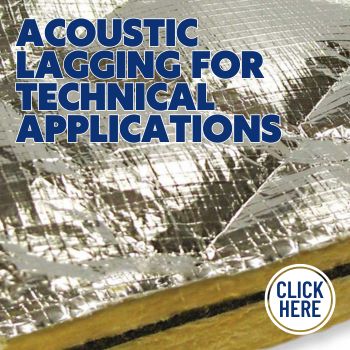April
Contract Flooring Journal
Unravelling the Complexities of Acoustic Flooring
The eradication or, at the very least, the control of unwanted sound – that’s noise to you and me – should be a relatively straightforward matter. And yet the marketplace is saturated with soundproofing products and ‘acoustic solutions’. Nowhere is this more so than in the flooring market, where acoustic underscreeds, acoustic underlays, acoustic overlays, acoustic cradles and acoustic battens, to name just a few, are all vying for your attention. Faced with so much choice, it’s remarkably easy to opt for entirely the wrong soundproofing product.
The purpose of this article is not to tell you which acoustic flooring products to purchase (that would hardly be fair given that CMS Danskin is one of the UK’s largest providers of acoustic products for construction and industry). Rather, we intend to enable you to thoroughly interrogate a product before you commit to placing an order.
The first consideration should always be ‘What problem am I looking to solve?’ Yes, you want to eradicate or control noise, but to what end and, more importantly, to what extent? This is a reasonably easy question to answer as it is likely to be driven by legislation and regulation. Whether it’s Part E (Section 5 in Scotland, Part G in Northern Ireland), BB93, Noise at Work Regulations, the Noise Abatement Act or Robust Details, performance requirements will be laid-out precisely in decibels. You just need to check that your acoustic insulation product meets or exceeds the requirements for compliance. And don’t just take the manufacturer’s word for it; look for soundproofing products tested by UKAS accredited laboratories or something similarly authoritative.
Next, you’ll need to consider the environment in which you intend to install your acoustic flooring. What kind of footfall and loading will the floor have to withstand. In other words, what kind of punishment is it liable to be subjected to? For example, a gymnasium, with all those weights and thumping treadmills, will require something pretty heavy duty. Look for phrases like ‘high tensile strength’, ‘minimal creep’ and resistance to ‘bottoming out’, ‘ageing’ and ‘deformation’. Any worthwhile acoustic flooring product will give you its ‘maximum load bearing capacity’. And in this sort of scenario you may want to consider a robust rubber granulate product rather than a foam-based floor soundproofing solution.
Floor type is another crucial factor. Timber, beam and block, concrete (pre-cast or cast in-situ): not all acoustic products are universally suited. It’s vital that you check. A ‘dimpled’ product that works perfectly under screed, for example, is almost certain to cause problems if used directly beneath a floor finish such as vinyl or ceramic tiles.
Speaking of floor finishes, this is another crucial factor to be considered. For instance, a ceramic tile finish may demand a product that complies with the UK Tiling Association’s technical requirements. A light-coloured carpet, laminate or vinyl will almost certainly benefit from an acoustic underlayment that isn’t prone to plasticizer migration.
So, before you even pick up the telephone to speak to your acoustic flooring provider, you’ll need to consider legislation, environment, floor type and floor finish, and only when you’re absolutely satisfied that your unique requirements have been addressed, should you consider placing an order.




Comments are closed.